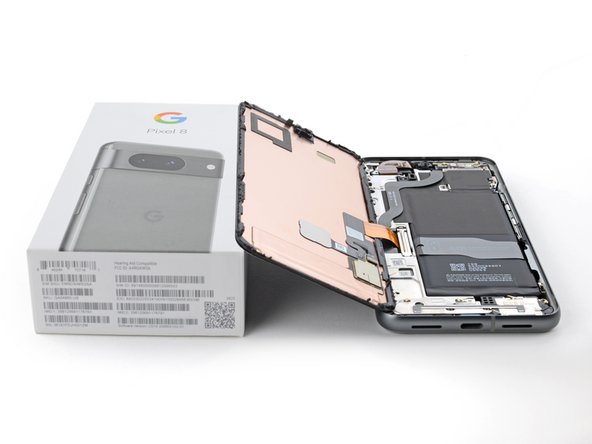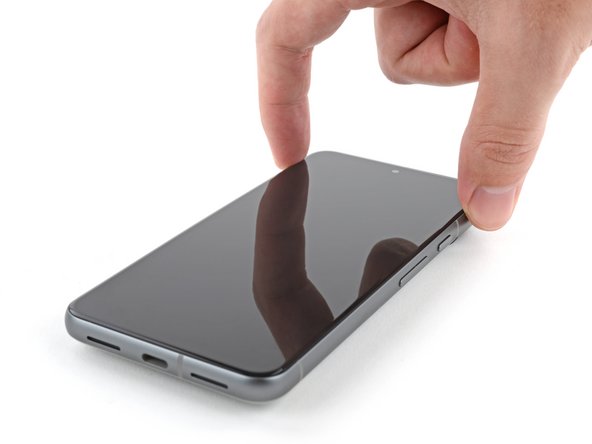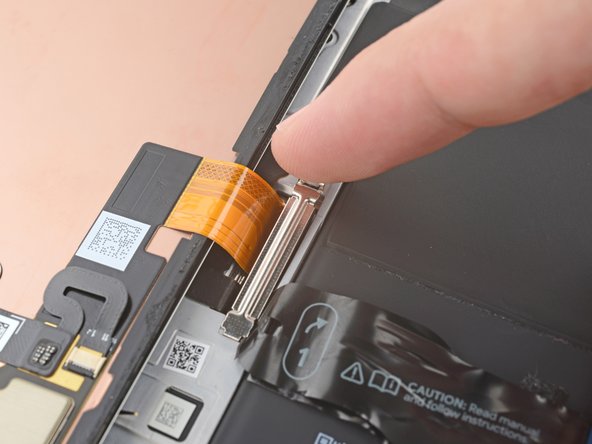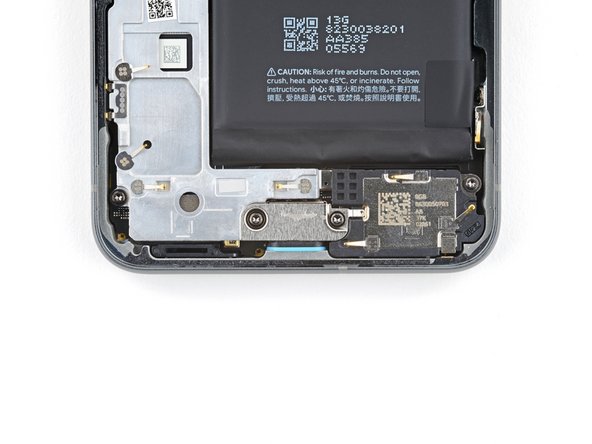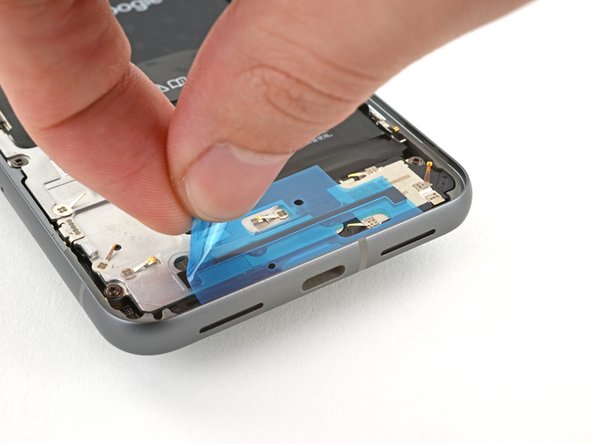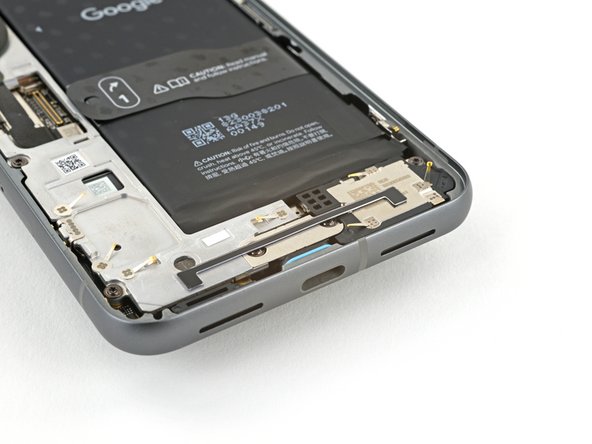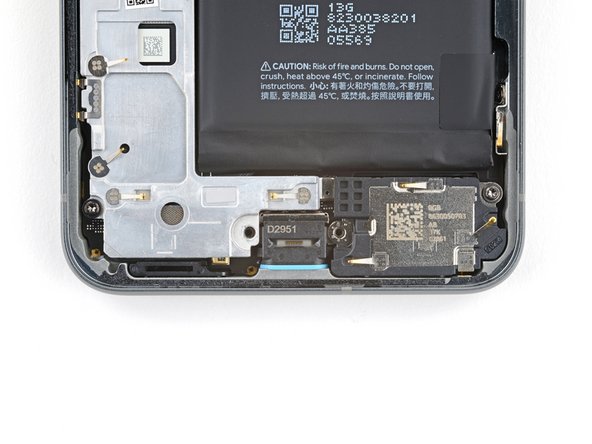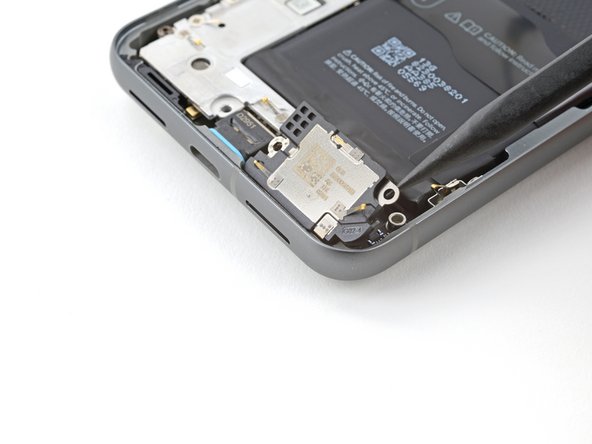DIY Google Pixel 8 Bottom Speaker Replacement Guide
Duration: 45 minutes
Steps: 28 Steps
Get ready to fix your device with this easy-to-follow repair guide from Salvation Repair! We’ve put together a clear, step-by-step guide to help you get the job done. If you need help, you can always schedule a repair
Welcome to your go-to guide for replacing the bottom speaker in your Pixel 8! This charming little speaker is the life of the party when it comes to calls, videos, and tunes. If your audio is sounding a bit off or just plain silent, it might be time for a replacement. Just a heads up, you’ll need some replacement screen adhesive to get the job done right. And if you’re rocking the non-mmWave version, no worries! You can still follow along—just skip the steps that talk about the 5G mmWave antenna. So, roll up those sleeves and let’s get to it!
Step 1
Before diving into this repair, let that Pixel’s battery dip below 25%. A fully charged lithium-ion battery can be a bit fiery if it gets damaged, and we want to keep it chill!
Simultaneously press the power and volume up buttons to pop up the shutdown menu!
– Time to get started! First, carefully unplug all cables from your phone to avoid any accidental power-ons or short circuits.
– Next, completely power off your phone – this will help you avoid any unexpected surprises during the repair process.
Step 2
Looking to keep your pick in check? No worries, just tape a coin to that pick, about 3 mm from the tip. This way you can still separate the screen with ease, without putting your device at risk.
– Grab your trusty measuring tool and mark a spot 3 mm from the tip of the opening pick using a permanent marker. Let’s make sure we get it just right!
Step 3
The screen is stuck to the frame with adhesive and clips, but don’t worry, it’s easier to remove than you think. Just apply some heat to soften the adhesive and you’ll be able to separate the screen in no time.
If you don’t have the right tools, you can use a hair dryer, heat gun, or hot plate to get the job done. Just be careful not to get too carried away with the heat, or you might damage the screen or battery. Take your time and you’ll be golden.
– Warm up an iOpener and apply it gently on the bottom edge of your screen to soften up that sticky stuff. Doing this will make the process so much easier!
Tools Used
Step 4
The next three steps are all about the Anti-Clamp, a handy tool we designed to make opening things up a breeze. If you’re not using the Anti-Clamp, just skip ahead three steps for a different approach.
For the full scoop on using the Anti-Clamp, check out this guide .
– Give that blue handle a gentle tug backward to unleash the Anti-Clamp’s arms.
– Set your phone down with the screen facing up on a flat surface so it sits comfortably between the Anti-Clamp’s arms—the bottom edge should be hanging over just a bit.
– Slide the arms over the left side of your phone to easily access the bottom edge.
– Nestle the suction cups as near to the center of the bottom edge as you can.
– Squeeze those cups together to work some suction magic.
Step 5
– Pull the handle forward to lock the arms in place.
– Turn the handle clockwise one full turn (360 degrees), or until the suction cups start to stretch.
– As the cups stretch, ensure they stay aligned with each other. If they keep slipping, remove the Anti-Clamp and apply tape for the cups to stick to.
Step 6
Keep your opening pick within 3 mm—it’s a tight space in there! We want to avoid any spring contact drama. You’re doing great!
– Take a minute to let the magic happen – wait for a gap to form between the screen and frame.
– Time to get picky! Insert an opening pick into the gap and get ready to move on to the next step.
– Now it’s time to unlock the arms – pull the blue handle backwards and use the pull tabs on the suction cups to remove the Anti-Clamp. Easy peasy!
– Skip the next two steps – we’ve got this!
Step 8
If you’re finding it difficult to create a gap, just crank up the heat a bit more and give it another go! You’re doing great!
– Give that suction handle a good, strong pull – steady now! You’re aiming to create a little gap between the screen and the frame, so let’s get that baby open!
– Now, slip an opening pick into that gap you just made. Easy peasy!
Tools Used
Step 9
– Alright, so the screen cable is located just shy of halfway up the left edge of the phone. Take it easy and handle it with care to avoid any accidental tears.
– You’ve got a bunch of spring contacts hanging out around the perimeter of the phone. Just a friendly reminder to tread lightly in these areas to keep those contacts in shape.
Step 10
– Glide the opening pick along the bottom edge to loosen the adhesive holding it in place.
– Keep the pick in the bottom right corner to stop the adhesive from sticking back together.
Step 11
If you’re feeling adventurous, a hair dryer, heat gun, or hot plate can come in handy! Just remember, too much heat can lead to a screen or battery meltdown, so proceed with caution and keep it cool. You’re doing great!
– Time to get this repair started! Apply a heated iOpener to the right edge of the screen for two minutes to loosen things up.
Tools Used
Step 12
– Time to get this screen loose! Insert a second opening pick under the bottom right corner of the screen to help things along.
– Now, gently slide the new pick up to the top right corner – this will help break the adhesive’s grip on the screen’s right edge.
– Leave that pick right where it is, in the top right corner, to keep the adhesive from sneaking back in and resealing itself.
Step 13
– Slide a third opening pick snugly under the bottom edge of the screen.
– Gently glide the new pick over to the bottom left corner.
– Keep that pick in place at the bottom left corner to keep the adhesive from re-sticking.
Step 15
– Slide a fourth opening pick right under the bottom left corner of that screen.
– Gently glide the new pick up to the top left corner to break free the adhesive holding the screen’s left edge.
– Keep that pick in place at the top left corner to stop the adhesive from sealing up again.
Step 16
You can also grab a hair dryer, heat gun, or hot plate if you’re feeling adventurous! Just remember, too much heat can be a screen and battery’s worst enemy, so handle with care!
– Heat up that iOpener and rest it on the top edge of the screen for a cozy two minutes!
Tools Used
Step 17
– Let’s get this screen separated! Slide a fifth opening pick under the top edge of the screen, near the left corner.
– Now, slide that pick to the top right corner, gently prying apart the adhesive holding the screen in place. It’s like giving your phone a little hug, but with a tool.
Step 18
Go easy on that screen cable, friend. You don’t want to give it a workout, now do you? 😉
If the screen feels stuck, don’t worry! Just go back around the edges with an opening pick to gently loosen any remaining adhesive, and you’ll be back on track in no time.
– Grab a small box or a few books and place them to the left of your phone. This will help you keep the screen nice and propped up while you disconnect its cable.
– Now, gently lift the right edge of the screen just like you’re flipping open the cover of a book. Easy peasy!
– With the screen propped up, you’ll have a clear view to access the screen cable. You’ve got this!
Step 19
– Grab your trusty opening pick and gently lift up the top edge of the screen cable cover. You’ve got this!
– Now, go ahead and take off the cover. Easy peasy!
Step 20
– Time to get started! Insert the point of a spudger under the top left corner of the screen’s press connector – it’s like a little puzzle piece waiting to be freed.
– Gently pry up and disconnect the cable. Easy does it, you’re making great progress!
– Remove the screen, and take a moment to admire your handiwork so far.
– Now, to reconnect a press connector, align it over its socket and gently press down on one side until it clicks into place, then press down on the other side. Remember, gentle pressure is key – don’t press down in the middle, or you might end up with bent pins and a bigger problem on your hands. If you’re feeling unsure, just take a deep breath and try again. And if you need help, you can always schedule a repair with the pros at Salvation Repair.
Tools Used
Step 21
– Grab the pull tabs and peel off the liners covering the front camera cutout, rear camera pad, back of the screen, and perimeter adhesive.
– Hook up the screen cable and snap its cover back on.
– Before sealing your phone, it’s a good time to test it. Turn it on briefly to ensure it works fine, then power it down to continue.
– Firmly press the screen into place on the frame. You should feel the clips ‘snap’ into place.
– Press firmly around the edges of the screen to secure it with the new adhesive.
– Follow this guide to calibrate the fingerprint sensor.
Step 22
A light touch is all you need to free that plastic buffer sticking to the midframe and bottom speaker.
– Hey, wanna have some fun? Grab that plastic buffer and let’s slide the tip of the opening pick under it with a smile! Almost there, just need a pair of tweezers or your trusty fingers. Aren’t we the sly duo? Keep it up, you totally got this! Once you’ve got a hold, check out our friendly tutorial for more tips and tricks. If you need help, you can always schedule a repair.
Step 24
As you work on this repair, keep an eye on each screw and make sure it goes back exactly where it belongs.
The Pixel 8 uses Torx Plus screws, but standard Torx bits will also do the trick. Just remember to apply constant, downward force to avoid stripping.
– Grab your trusty T3 Torx driver and give those two little 5mm 3IP Torx Plus screws securing the USB-C port bracket a little nudge. They’ll be happy to come out and say hello!
Step 25
– Grab your trusty tweezers or just your fingers, and gently lift off that USB-C port bracket. You’ve got this!
Step 26
– Alright, let’s get that plastic shim replaced! It fits snugly across the bottom of the midframe and the loudspeaker. If you don’t have a shiny new one, no worries! Just press the old shim back into position.
– Peel off that clear liner from the shim—it’s time to reveal the good stuff!
– Now, check out those handy markings on the midframe to help you line up the left side of the shim. Once aligned, give it a gentle press.
– Grab your spudger and use the flat end to push down firmly along the whole shim. This will help secure it nicely!
– Lastly, remove the blue liner and voila! You’re all set!
Tools Used
Step 27
– Let’s get that speaker out! Grab your trusty T3 Torx screwdriver and give that 5mm-long screw holding the bottom speaker in place a little twist to the left.
Step 28
– Time to put your device back together! Just retrace your steps in reverse and you’ll be golden.
– Want to check if everything’s running smooth? Use the built-in diagnostic tool; just click here.
– Got some old tech lying around? Make sure to recycle it responsibly at an R2 or e-Stewards certified recycler.
– If things didn’t go quite as expected, don’t sweat it! A little troubleshooting might do the trick, or feel free to reach out for advice.
– Need to take a break? Just click cancel and remember, it’s all good!
–
Tools Used
Success!












































